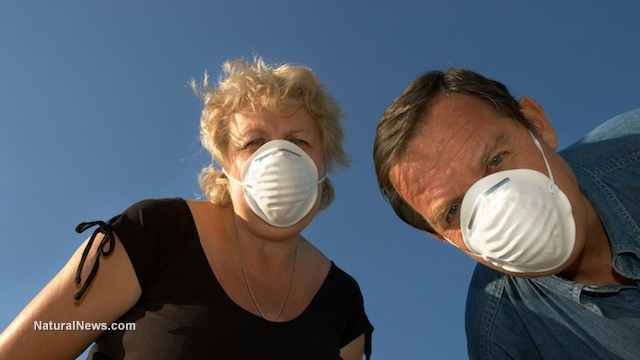| Online: | |
| Visits: | |
| Stories: |

| Story Views | |
| Now: | |
| Last Hour: | |
| Last 24 Hours: | |
| Total: | |
Ebola Protection Myths Busted: ‘Direct Contact’ Means Indirect Contact, N95 Masks, Full-Face Respirators And More

(NaturalNews) If ebola goes airborne, its spread would be utterly impossible to stop, say many experts. Some scientists insist the possibility of the virus mutating into a full-blown “airborne” variety is rather small, but no one denies that such risk increases with each and every day that the contagion is not stopped in Africa.
At the same time, ebola is now in America, having been confirmed in “patient zero” Thomas Eric Duncan in Dallas. Because of this, a huge number of Americans and Canadians are now wisely investing in protective gear such as Tyvek body suits, N95 masks, respirators, latex gloves, isolation gowns and more. But most people have little or no training on how to use these items properly, so in the interests of public health and safety, I’m going to cover a few basics here.
As far as my own background goes, I’m trained in microbiology testing and I’m the director of the Natural News Forensic Food Lab, where I conduct food contamination testing using ICP-MS instrumentation. Although I’m not a doctor, I can easily cover the basics of safety from exposure to viral pathogens.
How ebola spreads
The key point to understand in all this is that you can catch ebola by coming into contact with any body fluid that originated from another person.
The CDC is lying to the public when it says catching ebola requires “direct contact.” It does not. You can catch ebola through indirect contact by coming into contact with the blood, saliva, mucous or other body fluids from an infected patient. This can happen over short distance through airborne aerosols, where the ebola virus hitches a ride on small particles of spit and mucous floating around in the air, for example.
The CDC actually sort of admits this on its ebola Q&A page [1], where it gives a definition for “direct contact” that actually sounds like the precise definition for what should be called “indirect contact.” As the CDC says on its own website:
What does “direct contact” mean? Direct contact means that body fluids (blood, saliva, mucus, vomit, urine, or feces) from an infected person (alive or dead) have touched someone’s eyes, nose, or mouth or an open cut, wound, or abrasion.
In other words, the CDC is saying that “direct contact” means indirect contact — i.e. touching the fluid that came from an infected patient.
What this means is that you can acquire an ebola infection without ever touching an ebola victim.
It also means the use of the term “direct contact” by the CDC is pure doublespeak — language used to obfuscate meaning rather than impart it.





everyone knows ebola only mutates into an airborne virus within the borders of the usa, everyone else is completely safe.